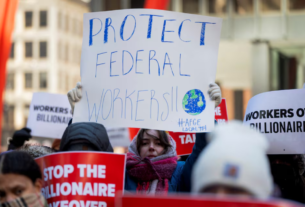Mexico has extradited 29 high-ranking cartel figures to the United States, responding to President Donald Trump’s threat to impose 25% tariffs on Mexican goods. This decision, made ahead of trade talks, aims to demonstrate Mexico’s commitment to combatting fentanyl trafficking and illegal migration.
The extradited criminals include Rafael Caro Quintero, co-founder of the Guadalajara Cartel, and Antonio Oseguera Cervantes, brother of Jalisco New Generation Cartel leader Nemesio Oseguera. Both cartels are heavily involved in fentanyl distribution across the U.S., contributing to the ongoing opioid crisis.
The U.S. Department of Justice confirmed the transfer of the 29 defendants into its custody. Caro Quintero, wanted for the 1985 murder of U.S. DEA agent Enrique “Kiki” Camarena, is set to face federal charges in Brooklyn.
Also included in the extradition were key figures from the Sinaloa Cartel and the Jalisco New Generation Cartel. These criminal groups are major players in the trafficking of fentanyl and other illegal drugs into the U.S.
The decision to extradite these individuals follows Trump’s warning of tariffs, set to take effect on March 4, if Mexico does not curb drug trafficking and migration. Mexico’s economy, reliant on trade with the U.S., could suffer significantly from such duties.
The suspects were sent to various U.S. cities, including New York, Phoenix, and Chicago. Caro Quintero’s extradition is particularly significant, given his role in both the drug trade and the notorious murder of Agent Camarena.
Analysts view the extradition as a strategic move by Mexico to avoid economic penalties. By handing over these high-profile criminals, Mexico hopes to demonstrate its willingness to cooperate with the U.S. on drug enforcement.
Mexican authorities have faced increasing pressure from the U.S. to address drug violence and trafficking. The extraditions signal Mexico’s acknowledgment of the need to take stronger action to combat these issues.
While Mexico has confirmed the extradition, it has described the process as a “transfer,” leaving questions about the legal procedures followed. Some critics argue that the move may bypass certain diplomatic or legal requirements.
Among those extradited were two notorious figures from the Zetas Cartel, Miguel Ángel Treviño Morales (Z-40) and Óscar Omar Treviño Morales (Z-42). The Zetas are infamous for their brutal tactics, including dissolving rivals in acid.
Reactions to the extraditions have been mixed. Some view it as evidence of Mexico’s good faith in addressing U.S. demands, while others argue that the country is being coerced by U.S. pressure into actions that undermine its sovereignty.
The extradition is part of a broader effort by the U.S. and Mexico to tackle the fentanyl crisis. Both governments are focusing on drug enforcement as part of their ongoing security collaboration.
U.S. authorities have long sought to dismantle the leadership of the Sinaloa and Jalisco New Generation Cartels. By extraditing these cartel leaders, Mexico is showing its commitment to addressing the opioid epidemic.
As the U.S. continues to grapple with the fentanyl crisis, the extradition of these leaders may influence future negotiations between the two countries. The move signals that both governments are working together to address the drug problem.
This operation highlights the importance of U.S.-Mexico cooperation in tackling organized crime. Despite questions about the legal process, the extradition demonstrates a joint effort to confront the drug trade.
The transfer of these cartel figures is a significant step in the ongoing battle against drug cartels. It may have lasting implications for U.S.-Mexico relations, particularly in the areas of trade and security.
This extradition also reflects the growing urgency to combat drug-related violence across both sides of the border. The U.S. and Mexico must continue to strengthen their collaboration to protect their citizens and address the drug trade.




